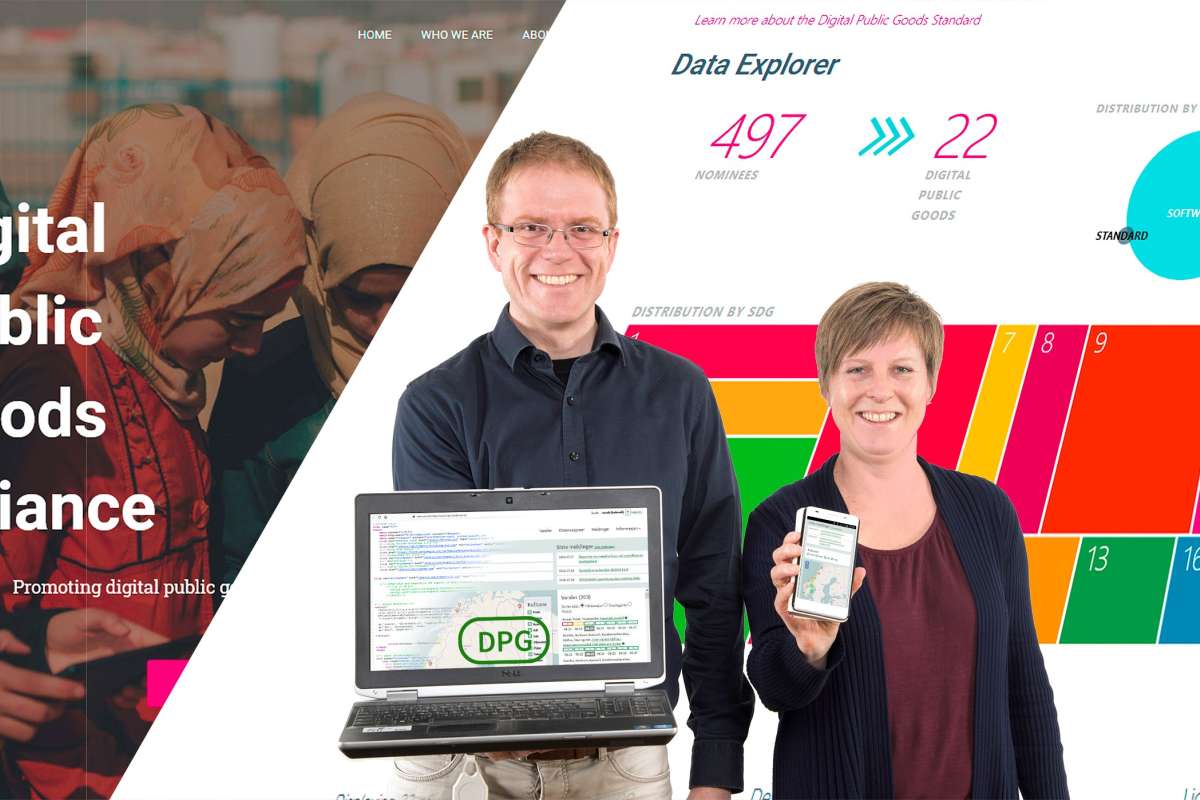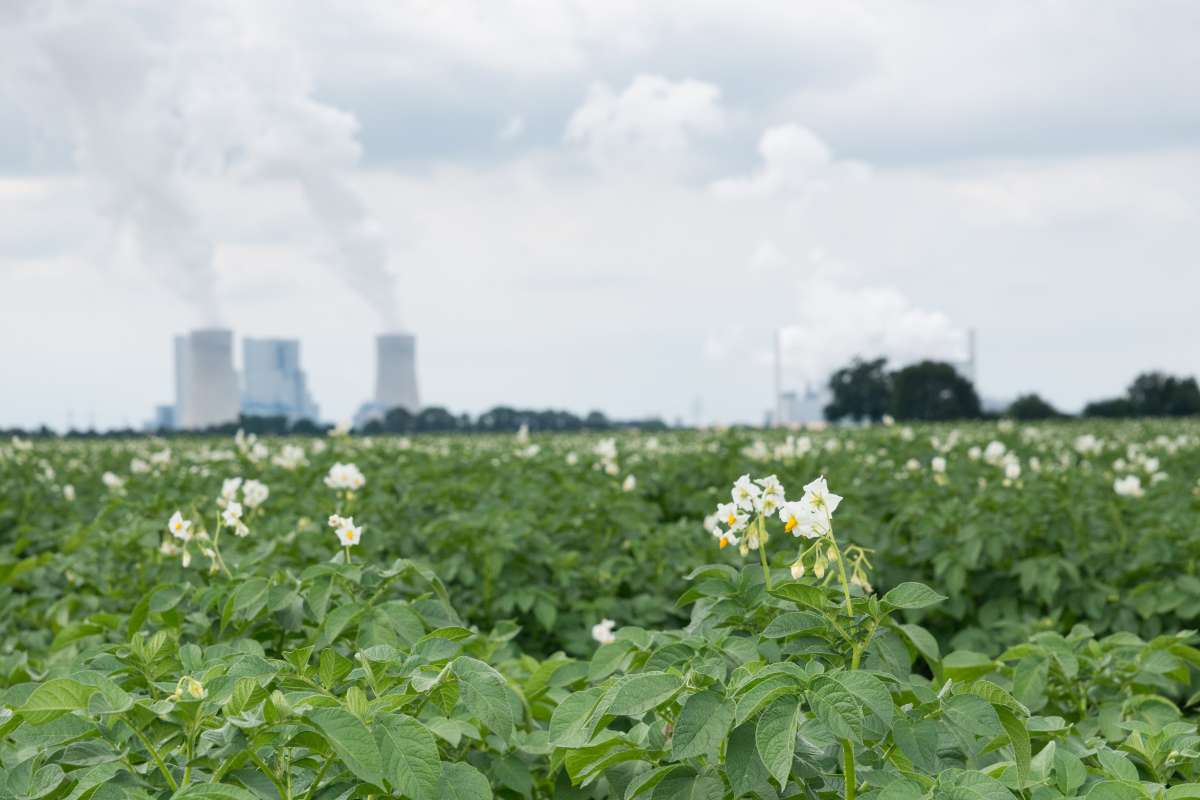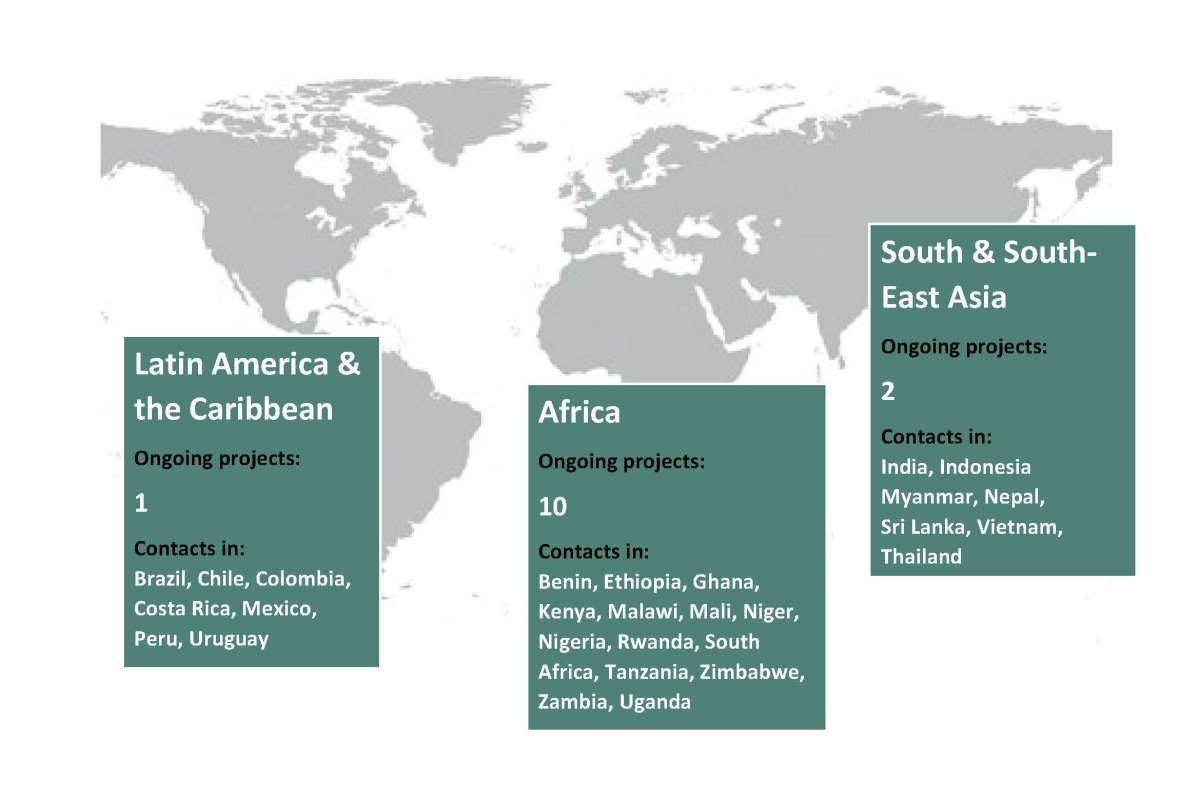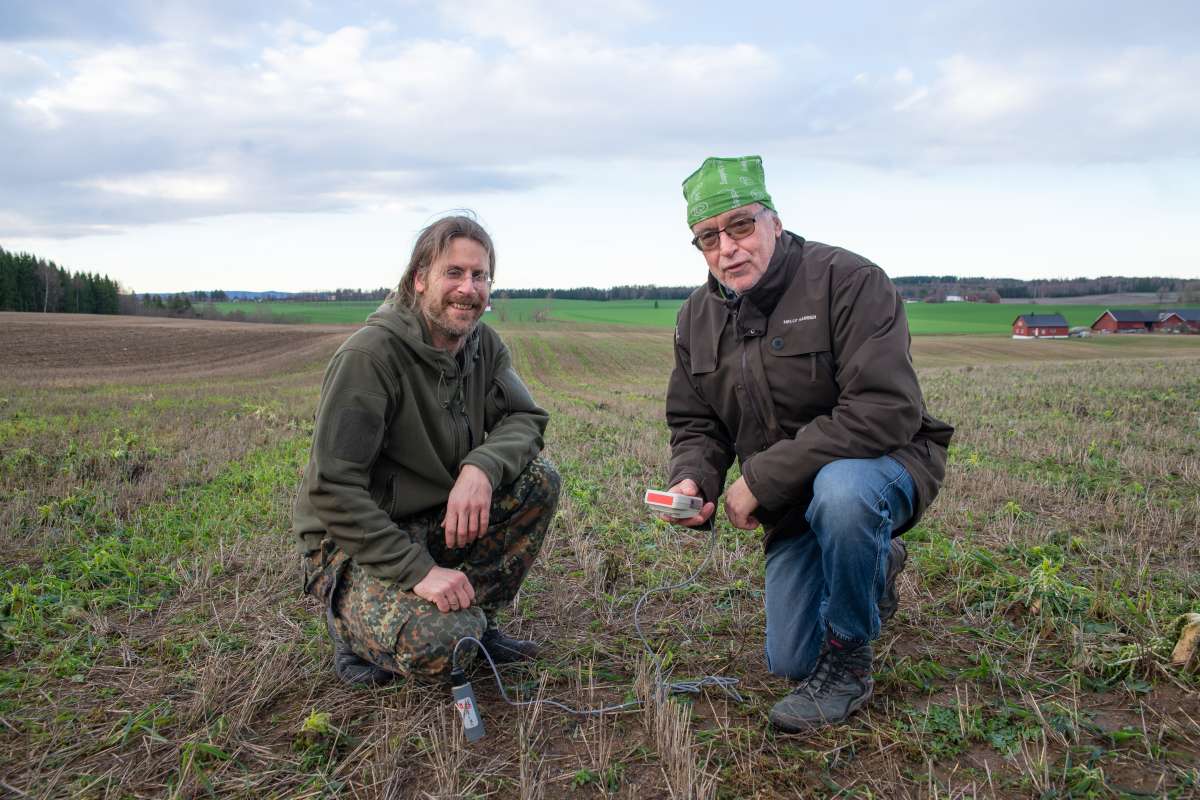Blue-green food production in Norwegian prison
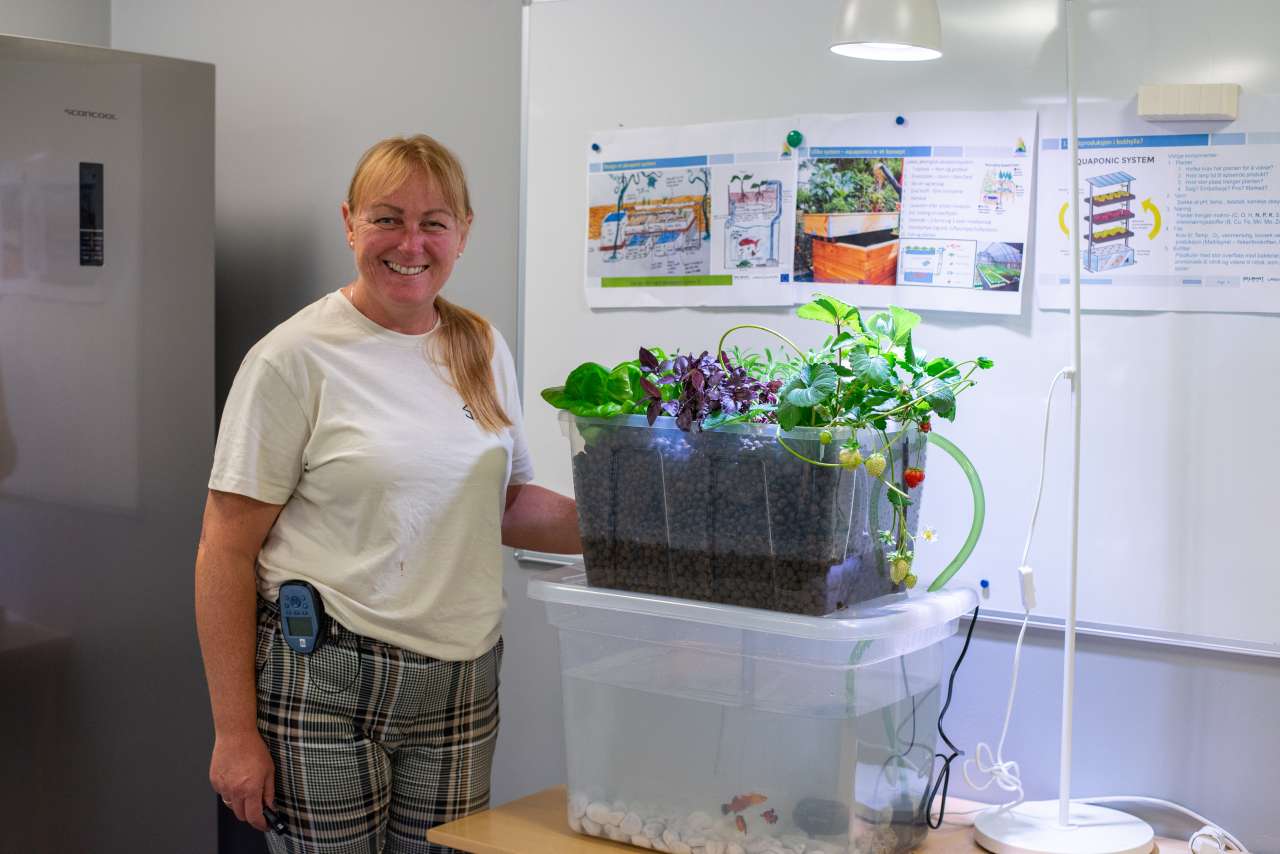
This aquaponics-unit is simple and cheap to build. What it takes is a rubber tube, a pump, sprinkling filter, light pebble granules, a growth light bulb in a regular lamp, and of course fish and fish feed. Project leader Siv Lene Gangenes Skar from NIBIO explains that a growth light bulb can be added to a normal lamp, and it is possible to use pebble granules that you find in your courtyard or local area. Only basic plastic boxes with cover is necessary. It’s important to remember to drill a hole on top of the plastic box, to make room for the pump and sprinkling filter. Photo: Anette Tjomsland Spilling
In Evje women’s prison in the southern part of Norway, inmates learn how to make mini hydroponics and aquaponics units. These are units where plants grow in water, with or without fish co-existing in the same system. The project is part of an international research project which focuses on aqua-agriculture.
Evje prison is a white wooden building surrounded by a green garden with a kitchen garden and small greenhouse. The only way to tell that this is a prison is the high fence that encircles the building. Here, 30 women serve time in one open and one closed facility. The women in open facility have more freedom and can leave their rooms and spend time in the garden as they prefer.
Outside, we are met by inmates from the open facility who will participate in today’s lesson. Every course day is divided in two, the first session takes place at the open facility until lunch, and then the last takes place in the closed one after lunch.
From AquaBOXponi sketches to construction
Once inside it all seems more like a prison. We are asked to turn in our cell phones, sign a declaration of confidentiality, and we receive security alarms.
On a shelf in one of the classrooms many small microgreen herbs are growing. Right next to the shelf there is a small white plastic tower with green plants grown in small openings all the way around. So far, the participants have learned about plant physics, fish biology, and nutrition. Now they are ready for the final part of the course, and the completion of a unit with both plants and fish.
“Today we will move on from drawing sketches to actually building the complete aquaponics unit. We call it the AquaBOXponi, because about it concerns how we can create optimal growing conditions in only one square meter,” explains Siv Lene Gangenes Skar to the participants.
Gangenes Skar is a NIBIO-researcher and the project leader for the Norwegian part of the EU-project CITYFOOD, that focuses on sustainable urban food production and training.
Today there are about twelve participants. Some of them frequently raises their hand to ask questions.
“Food preparation is already an integrated part of the daily routines. The inmates do their own shopping and food preparation. NIBIOs contribution is to teach them how to grow their own food, in only one square meter,” says Asbjørn Espenes. He works in the prison and is responsible for the project from their side.
“Asbjørn is the driving force behind this project from the inside of the prison. To succeed with this, we really need an employee on the team, who understands what this is about and is motivated,” says Gangenes Skar with reference to their collaboration.
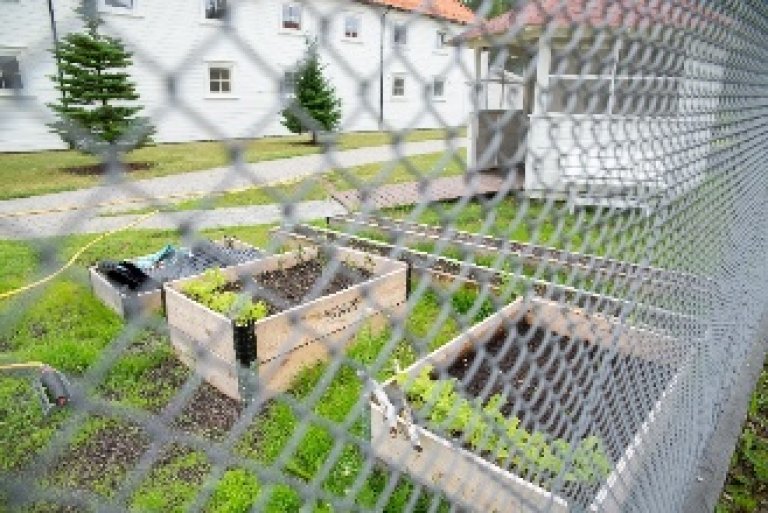
Valued by participants
In conversations with Inger Grete Stålesen from Lia Coach and support, several of the participants have expressed that the project is both educational, meaningful, and a valuable positive element to the quality of life in the prison. The inmates have answered several questions, some of which concern the significance of the project during their imprisonment:
“It is nice to have some outside visitors, it adds some variation to a bit boring every day life, and it’s good to observe that things are growing”.
“The project may help me with my anxiety and depression, and my concentration difficulties. I now have a responsibility to look after the plants and make sure they’re growing.”
“It is of great value to see how things are growing, it’s self-healing. I hate soil, and I think it’s brilliant to grow without soil in a clean production.”
“The project creates awareness and is meaningful. It is important to be in unity with nature, all green is good.”
“We can use the food we grow in our dinners and pastries, which is good. The project can also help us get a job after we’ve served our sentence.”
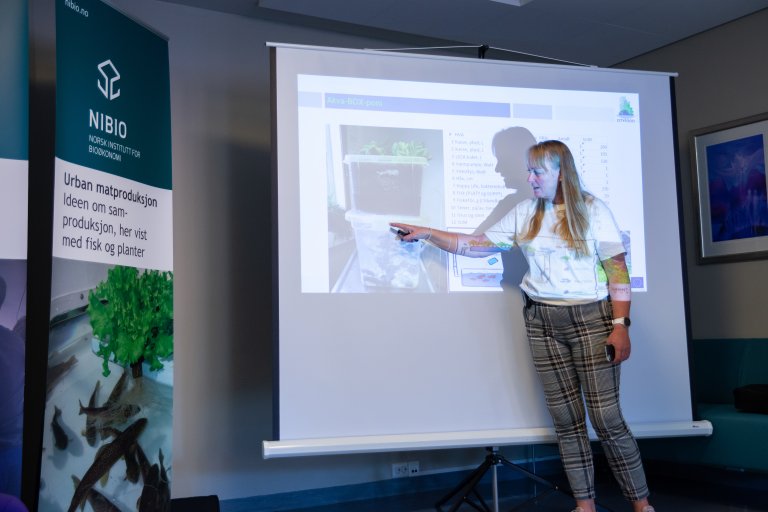
Fish biology and plant physics in practice
Gangenes Skar shows the participants a picture of a fish.
“This one is pregnant. How do we know? Well, it’s a spot behind here, on the stomach. But you already know everything about the inside of a fish. You’ve dissected one during this course.”
In other words, the course is both practical and theoretical. Every course day starts with about half an hour of theory, before the participants split into two groups. One group transforms theory to practice, i.e. by sowing and building microgreen units, while another group prepares lunch with ingredients from the microgreen unit and the prisons kitchen garden.
“We contribute with research and green knowledge, combined with practical work. This group has a very diverse background, with different interests, terms of imprisonment, mental health and energy level. Many are really tired when they first arrive to the prison, and in my opinion it is good to “reward” theory with practical work and a shared meal at the end,” says Gangenes Skar.
“Many of the participants have previous experience in running our garden greenhouse. The fish is an extra element, and something to watch and look at. NIBIO manages to involve everyone in one way or another, which is not always an easy task. But people are involved in different ways, whether it’s food preparation, or practical work related to the units,” says Espenes.
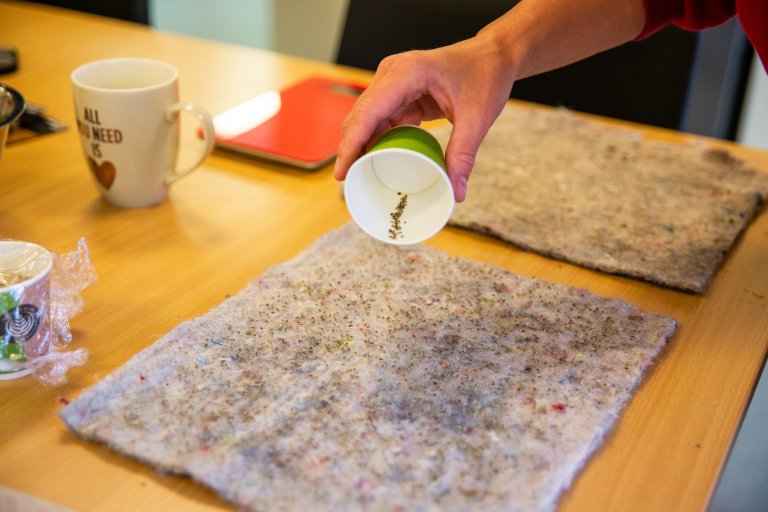
Sustainable solution at low cost
In order to make it possible for the participants to build their own systems after they’ve served their sentence, cheap and sustainable solutions have been important for the project management team from NIBIO. Engineer in NIBIO, Atle Beisland, is about to install the aquaponics box together with enthusiastic participants.
“Everyone can do this. There are several components, but the system is simple and cheap. You may even find the equipment you need in your garage. The pump and the light only cost 13 Euros. Besides those, I found everything back home.”
Beisland is assisted by the participants to fill light pebble granules and water in a plastic box. Then the goldfish are added. They drill a hole on top of the plastic box, to make room for the pump and sprinkling filter. Then the plants are added on top, in a new plastic box that is connected to the box underneath. A growth light bulb is inserted into a regular IKEA floor lamp, and the light is then placed next to the unit.
“I want you to feel it’s not a big deal to try this. Maybe you fail along the way, but then you just make some adjustments. It’s really not that difficult,” says Gangenes Skar.
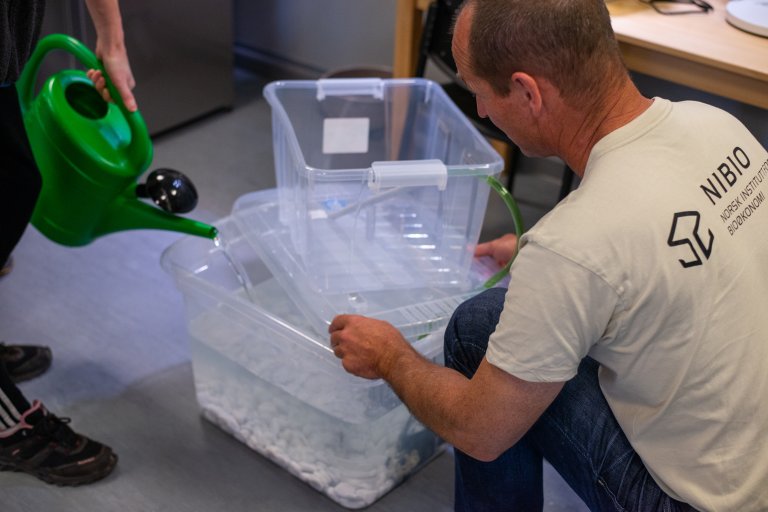
The participants are interested in sustainable food production
In the conversations with Stålesen, several of the participants highlighted how interesting it is to learn about sustainable food production, that is relatively cheap and easy to manage.
“It is nice to be updated on what’s going on in 2020, with regards to sustainable development. It strengthens my self-esteem, and I don’t need much money to do this when I get out.”
Several participants also highlight that they want to try this together with their family when they return home.
“It is interesting to learn something new and I like that this is something I can manage on my own. I’m concerned about the environment, and interested in health and ecological food, therefore I consider this as a good investment, also for my daughter.”
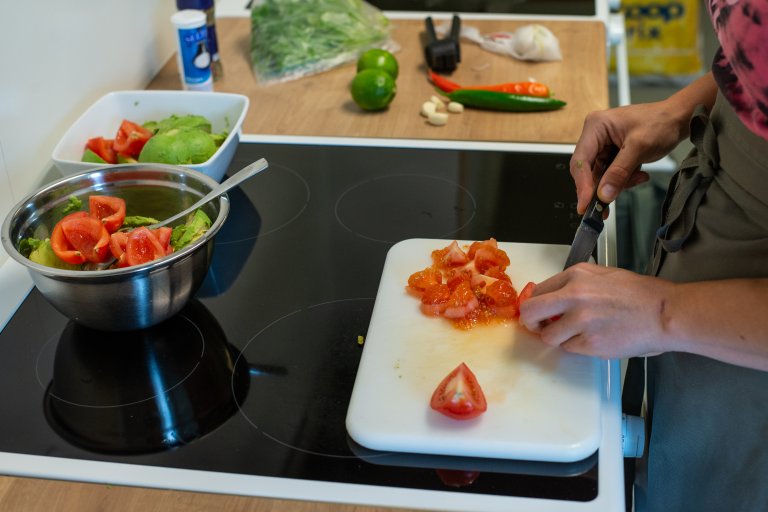
Certificate of competence
One of the project goals is to ease the transition to a life in freedom. The participants are provided with a certificate of competence for 20 hours of plant care, in cooperation with Setesdal High School. Everyone Stålesen spoke with considers this a positive opportunity.
“It is nice to receive proof that I have finished and learned this. This may contribute to filling gaps on my CV.”
“It is of great value that I’m able to follow this course over a period of time and take advantage of it later on. It’s also really good to receive a certificate of competence.”
Ingebjørg Tønnesland Hodne, from Setesdal High School, is a trained agronomist as well as child care and youth worker. She works part-time for the prison during the project period, and is responsible to maintain the hydroponic and aquaponic units.
“This is practical learning by doing, and not boring theory. Now they look forward to every Wednesday when they have classes. There is a lot going on then, and NIBIO adds positive energy to the group. The participants sow and learn to make food. In my experience they become more independent and confident. We harvest what we’ve grown, and they also learn something they can bring back home.”
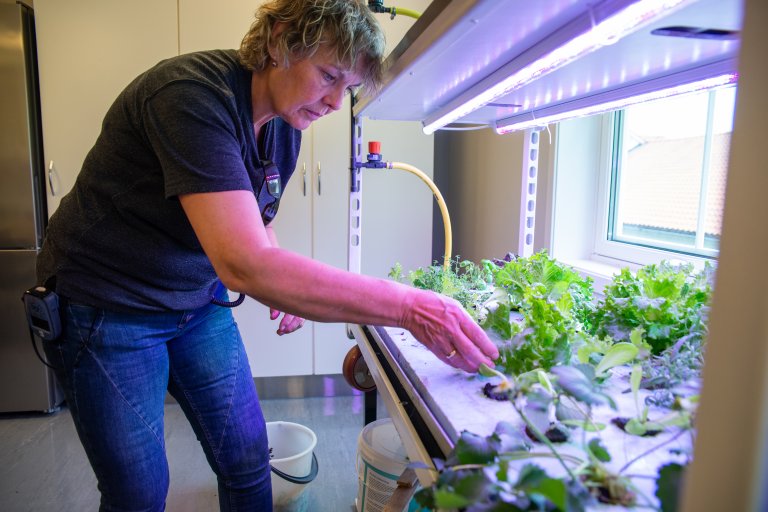
Green breathing space in everyday life
it is soon lunchtime, with high activity and an enthusiastic vibe in the air. Today‘s menu is taco and the kitchen team has been chopping vegetables worthy of a gold medal. On the table there is also microgreen and salad from the plant tower. The aquaponics unit is now finished and located next to the table.
“We register that the project contributes to a sense of achievement among many of the participants and that they relax around the table together with us, regardless of who is friends with whom. We have only witnessed the positive side of the criminal re-establishment system, but we’re also aware of the fact that these women have a lot of challenging days inside the prison walls. Our contribution is to be a “green breathing space” in a monotonous daily life,” says Gangenes Skar.
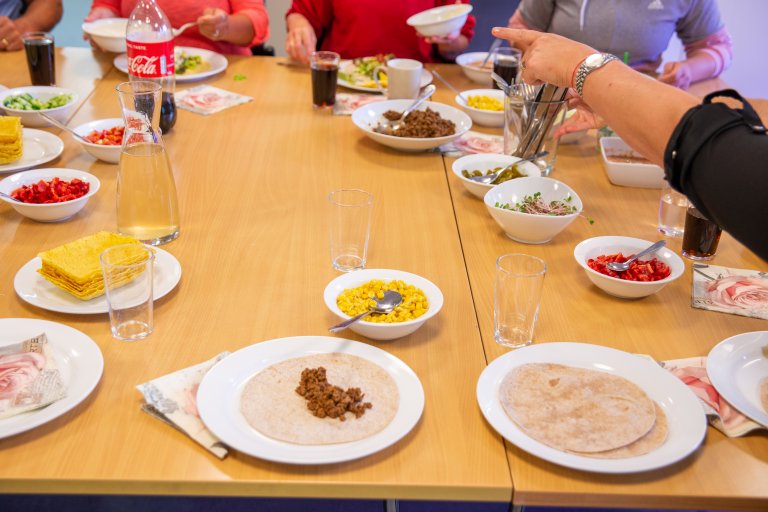
Hopes for spin-off effects beyond the project period
Prison Inspector Jan Balstad stops by to observe how the participants and CITYFOOD team are doing.
“This is the most engaging project for employees. There is a lot of activity, the participants care for, learn, and look after the facility. They pay attention and harvest what they’ve grown. We really want to implement a green line here.”
He hopes that the project will have spin-off effects beyond the project.
“We hope that they will be inspired to continue with this when they return back home, and for some it may be an engaging project to do with their children,” says Balstad, and adds that the prison wishes to contribute with some elements of this after the project period ends.
This article was written in the summer of 2020. The project will be finalized during the spring of 2021.
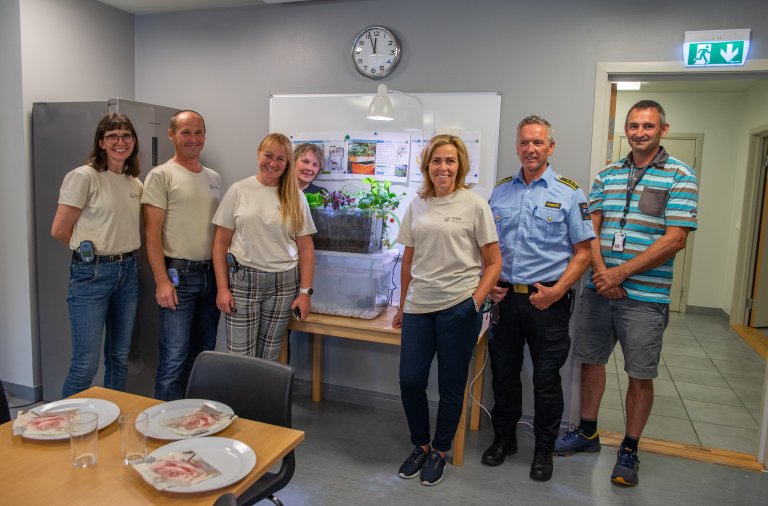
About CITYFOOD
The CityFood collaboration will explore the potential of integrated aqua-agriculture systems (IAAC) for urban applications. Emergent IAAC systems save energy, water and nutrients by combining contained recirculating aquaculture systems (RAS) with hydroponic plant production.
CityFood will examine IAAC to evaluate and optimize their potential within the food supply chancy addressing issues ranging from:
- Food production and storage
- Water-, energy- and nutrient-use efficiency
- Urban integration of food production
- Food safety and biosecurity issues
- Political and regulatory frameworks
CityFood will bring together the international and interdisciplinary skills of urban planners, farmers, researchers, entrepreneurs, community leaders and engaged citizens from Norway, Sweeden, Netherlands, Germany, USA and Brazil.
The project at Evje is one of several so-called Living labs. The aim is to build social skills and generate meaningful activities and opportunities for the prisoners, both inside and outside of the prison. This Living Lab will develop a general concept for how to integrate IAAC technology into prisons and a curriculum within IAAC technology for prison applications.
Links
CITYFOOD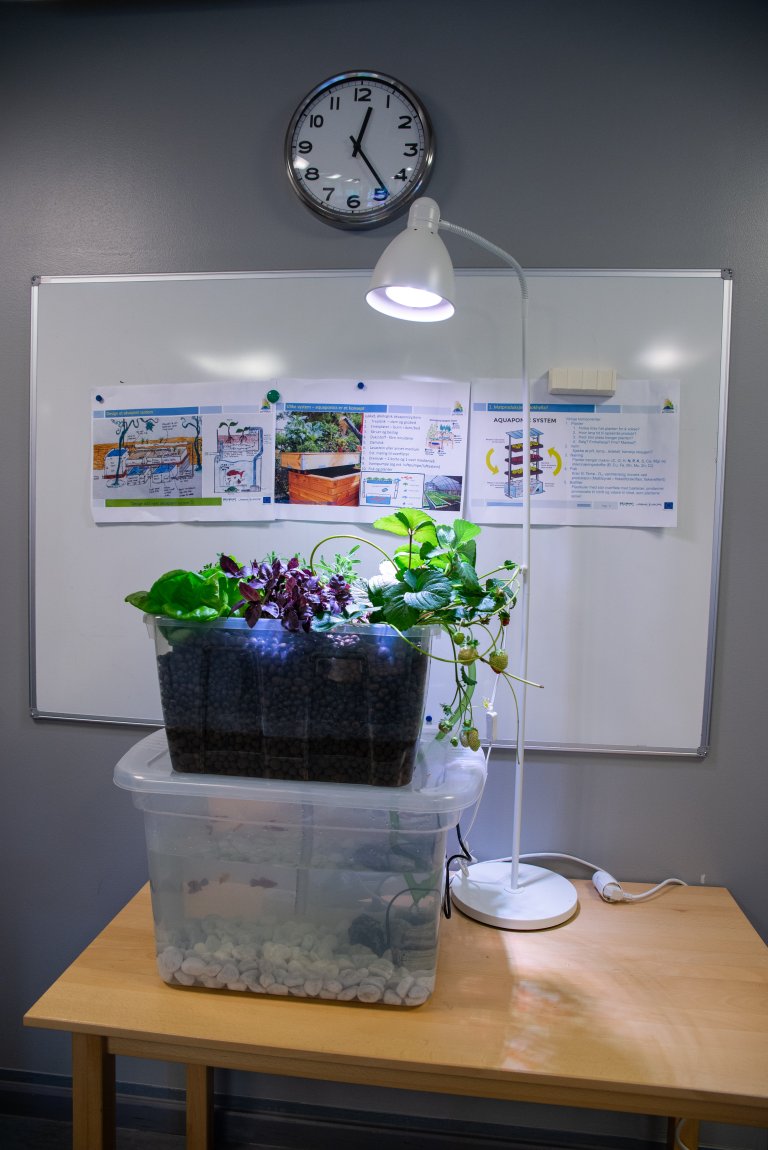
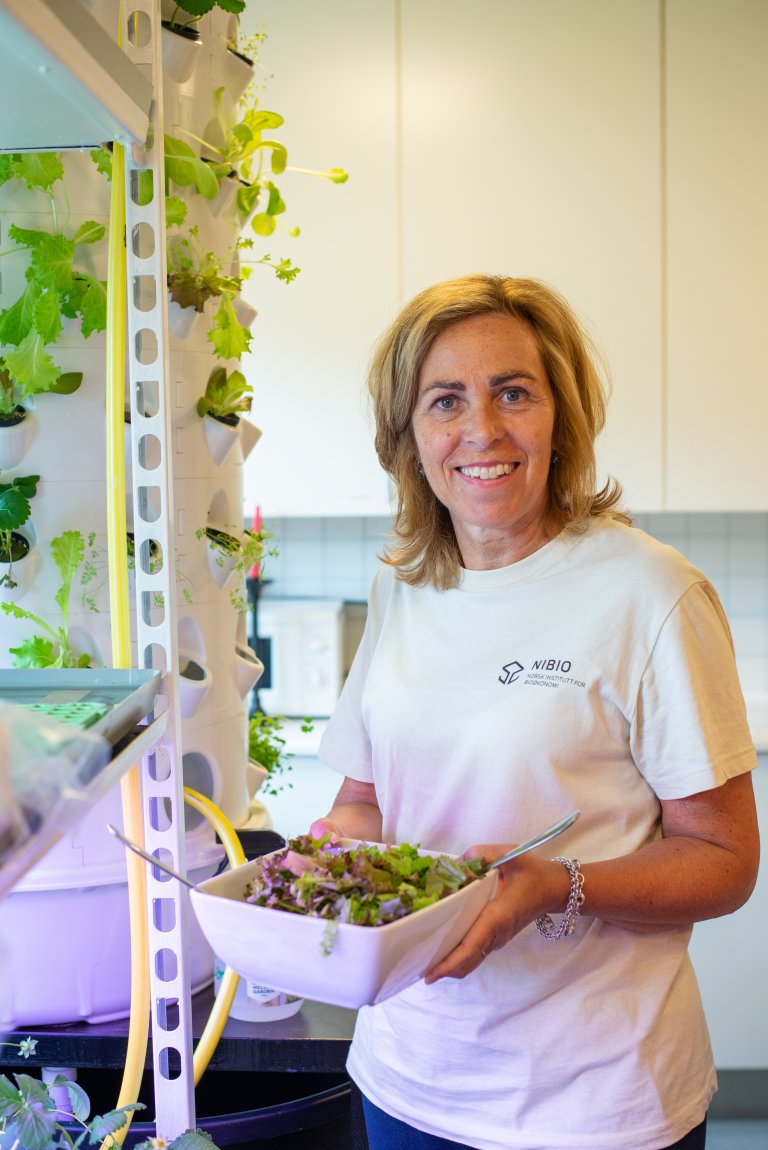
Do you want to teach inmates about sustainable aqua-agriculture?
Do you have a background within natural resources, agronomy, horticulture or similar, and find this project interesting? Siv Lene Gangenes Skar is interested in arranging a course about how to train inmates in aqua-agriculture, and at the same time spread knowledge from the project for similar opportunities in other prisons.
Please get in touch if you’re interested in this.

